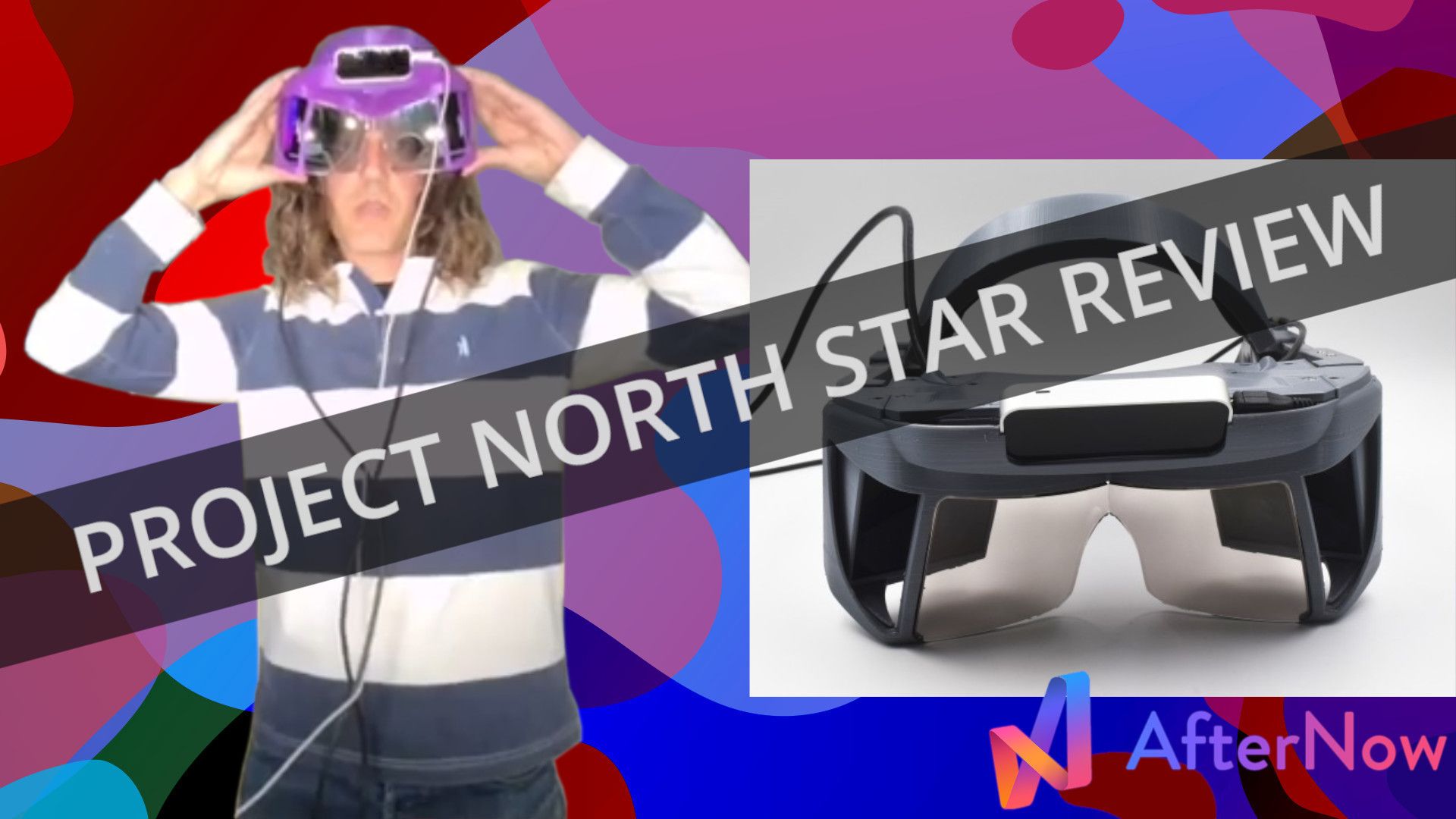Today this is a review for something very different in augmented reality - not a commercial product. The North Star augmented reality headset was initiated by Leap Motion (now UltraLeap) and became open source. They had a concept of an AR headset that would be controlled by the hands.
They created a Git repository, uploaded the full 3D printer schematics, and now anyone can build one. We built one at AfterNow and wanted to show you a bit about how it works.
How to Build Your Own North Star Headset
Let’s talk about how to create your own North Star headset first if you are interested. When you go on the developer’s site, or Google “project North Star” you’ll arrive on the website that explains a bit about how it works and you can download the files and documents about it.
There are a lot of different versions of the project now. You have to make sure you have the proper documentation for the version of the device that you are wanting to print.
Some elements are very complex and cannot be 3D printed so they must be purchased:
- The LeapMotion controller
- The reflective glass
- The displays
These key elements can be purchased online, and you can choose to assemble it yourself without or with 3D printed parts the lowest cost option, or you can choose to have them assemble the full kit for a bit more.
The North Star Device
The North Star has two small displays, a variation from the design of many other headsets that have one large display. The displays are on the side of your eyes and reflect into a reflection screen with a huge field of view and bright displays.
The device is moderately comfortable to wear and it’s a bit like the old Hololens but fairly heavy. Two types of eye calibration adjustments are available, one for near elements and one for far elements (further than arm length). We wanted to see the hand tracking and hand gestures so we kept it on the near eye calibration.
Capabilities
The device is currently somewhat limited at the moment due to limitations in software and hardware; it’s tethered and there’s a fair amount of cable coming from it.
The really nice aspect of having a 3D printed headset is that it can be tweaked as required. You’re making your own device and can experiment with it, you can adjust things like comfort, accessories, focus plane and modify it quickly however you want.
https://www.afternow.io/thank-you/
The visuals of the North Star look good and feel intuitive. The field of view is so large so the holograms stay in your vision and feel more immersive than other headsets.
SDK and Discord
The SDK is fairly standard. A Unity package is available to easily build Unity applications for the North Star headset. There is source code for a few virtual elements and a simple scene.
Optics look good out of the box. There is an additional app outside of the SDK for calibration. The calibration part requires two additional cameras that we are ordering.
On the GitHub repository, you can get a fair amount of constantly updated information about the headset and updates.
There’s also a very active Discord channel where you can discuss your headset and get feedback, details on modifications and updates on the latest device.
Pros and Cons and Conclusion
I love the idea of an open source headset. You have the hand tracking, the six degrees of freedom, a good quality display (we will explore optics later). It feels like it works excellently and the comfort can be fully customized.
Right now this is an excellent AR headset for experimentation - for things like user experience design, new UX concepts in augmented reality or new headset use case prototypes.
The drawback is that the device is fairly complex and requires a fair amount of CPU power. all the cables and it’s not really ideal for consumers yet - but maybe one day.
In terms of learning and version evolution, the device is awesome and is evolving quickly through the power of open source and a really active and supportive community.
The exciting part is that this open-source augmented reality headset can be custom created for very specific use cases and offers unlimited flexibility in that regard.
Pros:
- Amazing field of view
- Very natural hand gesture interactions
- A perfect AR headset for UX experimentation
- A highly supportive community for education
- Rapid new version releases because it is open source
- Incredible flexibility for custom use cases
- Relatively low cost to get started
- Excellent starting point if you want to create your own headset
Cons:
- Cables are burdensome
- Requires substantial tethered CPU processing power
- Not ready for consumer use yet (possibly someday)


